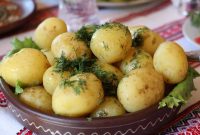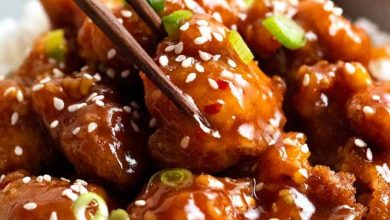Cuisines of Russia: traditional dishes and their history
Until the 14th century, Russian cuisine was simple and not very varied. Hot dishes were most often cooked in the oven: boiled, stewed or simmered for a long time under a closed lid. Frying in those days almost did not occur. Meat was cooked infrequently: about 200 days a year.
including all Wednesdays and Fridays, were fast. Food restrictions were different: sometimes it was forbidden not only to eat meat, fish and dairy dishes, but also to cook in vegetable oil. On the first day of Great Lent and on Good Friday before Easter, believers tried to do without food at all. On some church holidays, even during fasting, it was allowed to eat fish.
Bread was most often baked from rye, sometimes barley cakes were prepared. Flour went not only into the dough, but also into other dishes: oatmeal diluted with water or milk was used to make oatmeal, and thick jelly was cooked from rye or pea.
The basis of Central Russian cuisine was, as in the well-known proverb, “shchav and porridge.” There were about 60 types of cabbage soup alone: “full” ones were cooked with porcini mushrooms, several types of meat were put in “teams”, nettles, quinoa or other herbs were added to “green ones”.

Only fresh or sauerkraut remained the unchanged component of such a dish. In addition to cabbage soup, the housewives of that time also prepared other soups: fish kaya with cucumber pickle, bovina with beet leaves, okroshka with kvass.
Kashi was also a daily dish. They were cooked from peas, buckwheat, wheat or barley groats. Served both separately and with meat, fish, vegetables, mushrooms. Instead of dessert, porridge with milk and wild berries often appeared on the table.
Vegetables, mushrooms and berries made up a significant part of the Central Russian cuisine. They were eaten fresh and prepared for the winter in various ways. Until potatoes appeared in the 18th century, turnips were the main vegetable on the Central Russian table. It was eaten raw, boiled and baked in the oven, dried or fermented for the winter along with cabbage. The tops of this root crop were added to soups.
There were few sweets in central Russia. Desserts were most often fresh forest berries, baked apples with honey or gingerbread. They washed it all down with tea or herbal infusions. In summer, cold kvass was preferred from drinks, in winter they prepared warming seiten from honey, water and spices.

Russian North: cod, kasha and Pomeranian fish soup
Due to harsh winters and short cold summers in the Russian North, there was no such abundance of vegetables, mushrooms and berries as in the middle lane. The main dish here was fish, especially cod: it was believed that you can eat it every day and it never gets boring.
For a long time, Ponors ate raw frozen fish, cutting it into thin slices and dipping it in salt. This dish was called stroganina. But more often, fish was still cooked in different ways: Navara was fried, cod and haddock were baked or boiled, smelt was salted. One of the popular dishes was cod baked with cottage cheese. The fish was first boiled or fried in separate pieces, then laid out on a layer of chopped onions, covered with grated cottage cheese with vegetable oil and sent to the oven.
Pomeranian fish soup has become the most famous dish of northern cuisine. Milk, onion and spices were added to the broth: bay leaf, black pepper, lemon juice. These spices were brought here by English merchants, so the Ponors learned to use them earlier than all other inhabitants of Russia. On weekdays, Pomeranian housewives baked whole pike or ide in dough, and on holidays they put “red fishmongers” on the table – pies with salmon, chum salmon or pink salmon.
Despite the abundance of pies, bread itself was rarely eaten in these parts. It was difficult to grow grain in a harsh climate, and it was expensive to buy. Ponors had a saying: “Without fish is worse than without bread.”
The main type of meat on the Pomeranian table was venison. It was fried, baked, added to soups, dried for the winter. The meat was often served with lingonberry, cranberry, cloudberry or rosehip sauces. They were called “voles”. Such a sauce not only made the dish tastier, but also served as a source of vitamins, saved from colds and scurvy. A thick hot jelly was prepared from berry juice – kybosh. Any herbs and spices that were at hand were added to it.



